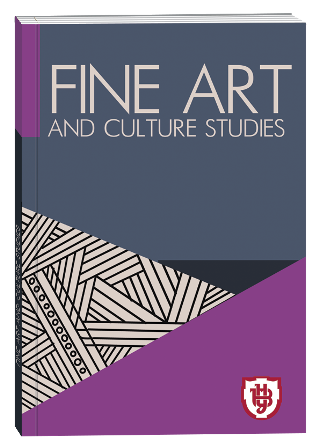PERFORMANCE PRESENTATION OF THE COLLABORATION OF M. LYSENKO AND T. SHEVCHENKO: FOLK-SONG INTONATIONS
DOI:
https://doi.org/10.32782/facs-2023-1-9Keywords:
M. Lysenko, T. Shevchenko, folk song motifs, performance, P. Karmalyuk, O. KulchynskaAbstract
The purpose of the article is to trace folk song intonations in the presentation of M. Lysenko's song works to the words of T. Shevchenko, in particular: "On Sunday morning, early" (performed by P. Karmalyuk) and "Oh, one, I'm alone" (performed by O. Kulchynska). The research methodology is based on an interdisciplinary combination of a number of approaches integrated from musicology, history, cultural studies. General scientific methods of analysis, synthesis, interpretation, generalization to the main principles of knowledge (reliability, impartiality, etc.) were also applied. Methods of processing information from Internet resources, in particular YouTube, are of great importance. For the analysis of scientific literature, systematization and bibliographic methods were used, which made it possible to better understand the main directions of modern research into the creativity of Ukrainian luminaries of poetry and music – T. Shevchenko and M. Lysenko. The scientific novelty consists in the musicological analysis of the folk motifs of solo singing by O. Kulchynska and M. Karmalyuk on the example of the works of O. Lysenko to the words of T. Shevchenko. Conclusions. The performance of the analyzed solos by O. Kulchytska "Oh, I'm alone, I'm alone" and P. Karmalyuk "On Sunday morning is early" from the composer's work by M. Lysenko to the words of T. Shevchenko is distinguished by simplicity, sincerity, sincerity, that is, all those qualities that are usually are also present in folk performers. However, the difference from a folk song can be traced in the increased drama and vivid emotional expression. However, M. Lysenko's lyrical solos usually contain signs of other genres, which requires singers to have emotional mobility, mastery in using a dynamic palette, timbral colors, and performance techniques. In general, it can be stated that the solo songs of M. Lysenko, created to the texts of T. Shevchenko, open wide opportunities for the use of means of musical expressiveness, characteristic of original Ukrainian folklore.
References
Берегова О. Шевченкіана в українській композиторській творчості ХХ століття. URL: https://www.culturology.academy/wp-content/uploads/KD7_Berehova.pdf
Козаренко О. Українська національна музична мова: генеза та сучасні тенденції розвитку : автореф. дис. д. мист. Київ, 2001. 23 с. [in Ukrainian]
Коляда І. Світоч слова і світоч музики: Микола Лисенко і Тарас Шевченко. Історико-літературний нарис (до 200-річчя з дня народження Т. Шевченка). URL: http://enpuir.npu.edu.ua/bitstream/handle/123456789/15278/Kolyada.pdf;jsessionid=CCA11BE9D1739747E2C92BAC16094075?sequence=1
Корній Л. Тарас Шевченко і Микола Лисенко: націокультурні та музично-стильові рефлексії. URL: http://webcache.googleusercontent.com/search?q=cache:k7-DI3exWpMJ:chasopysnmau.com.ua/article/view/242286/240220&cd=1&hl=uk&ct=clnk&gl=es
Людкевич С. Про композиції до поезії Т. Шевченка. С. Людкевич. Дослідження і статті. Київ: Музична Україна, 1976. С. 127–131.
Мусіяченко О. Образ Тараса Шевченка у музичному середовищі Києва другої половини ХІХ – початку ХХ ст. URL: https://core.ac.uk/download/pdf/33687487.pdf
Ольга Кульчинська, Павло Лисий – Ой, одна я, одна. URL: https://www.youtube.com/watch?v=NF9IB91w91U
Осадця О. До історії видання музичних творів М. В. Лисенка на тексти Т. Г. Шевченка. URL: https://www.lsl.lviv.ua/wp-content/uploads/Z/Z2014/JRN/PDF/33.pdf
Павло Петрович Каралюк – Дума (У неділю вранці рано). URL: https://www.youtube.com/watch?v=IpIgwP2UAaM
Фільц Б. Особливості розкриття поезії Т. Шевченка у творчості українських композиторів. URL: https://sm.etnolog.org.ua/zmist/2014/3/20.pdf







